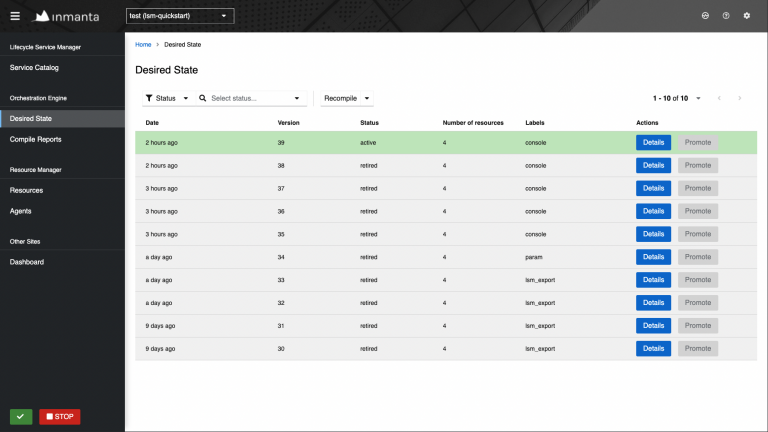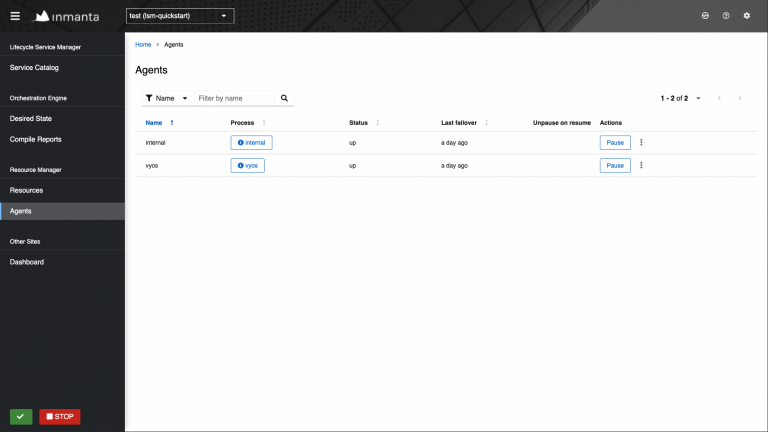We are pleased to announce the release of Inmanta Service Orchestrator, version 5. This new major release introduces several significant changes and features, bug fixes, and general improvements. The main contribution of this release is:
- improving the user experience with our new modules format and the new and improved UI,
- hugely extending the list of adapters by supporting the onboarding of native Terraform providers.
The full changelog of the Inmanta Service Orchestrator 5 release is available in our documentation, including the instructions for upgrading to the new release. Access to our commercial documentation requires free registration.
A new modules format
Inmanta Service Orchestrator 5 introduces the new and improved Inmanta Modules v2 format. These v2 modules are no longer distributed as distributed as Git repositories but as native Python packages.
A native Python package enables closer integration with the Python ecosystem and ultimately unifies the distribution channels for Inmanta modules and their Python dependencies. This makes it easier and faster to gain access to our latest features, while reducing human error and providing a more convenient testing and development experience.
Onboard any existing Terraform provider
This new major release also includes our highly anticipated Terraform adapter and generator that enable you to use any native Terraform provider through Inmanta. As a result, you can use Inmanta’s advanced multi-domain service orchestration with all Terraform providers, without having to use (or install) Terraform directly.
New Web Console replacing old Dashboard
Inmanta Service Orchestrator 5 includes the new and improved UI that we have been working on for the past 12 months. It is a complete replacement of the old Dashboard and is much more intuitive to use. We’ve also backported the new Web Console to Inmanta Service Orchestrator 4 (release 4.4.0).
We will briefly go over some parts in this post.
Environments overview
On the landing page, you are now presented with the environment section, allowing you to add, delete, and modify environments
.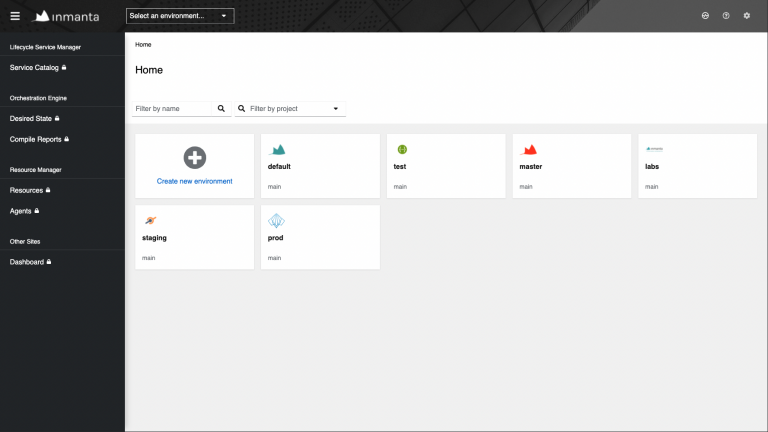
Desired state compare
You can now compare desired states and see what has changed between revisions.
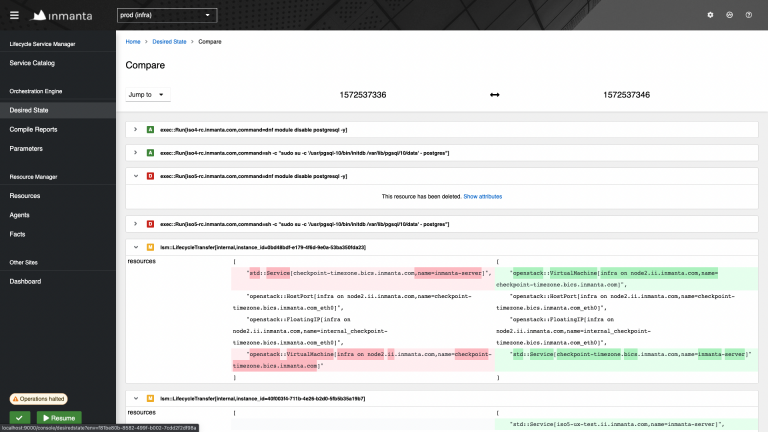
Facts page
The facts page can show you the information of resources in a compact view.
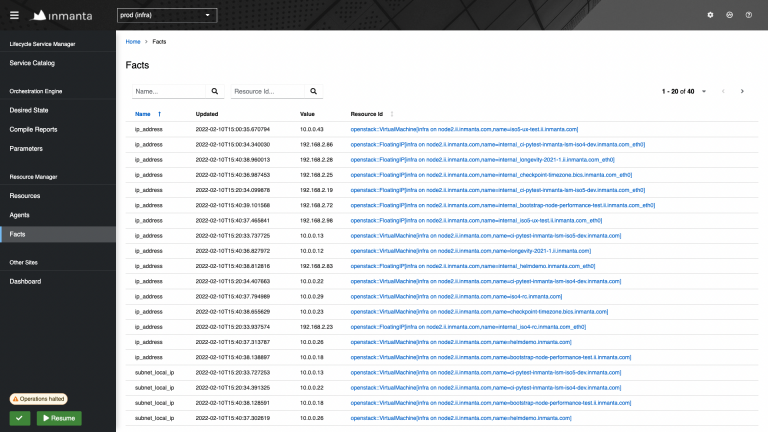
Desired state page
The desired state page has been added, allowing you to see the current intended result as well as the history of the previous or retired ones in one glance.
Agent page
Agents and their status are now available inside the Web Console.
Server status page
The status page displays all the server information and provides the means to easily download a support archive. The latter simplifies life a lot: for instance, with one click you retrieve all necessary information that our support team needs to help you.
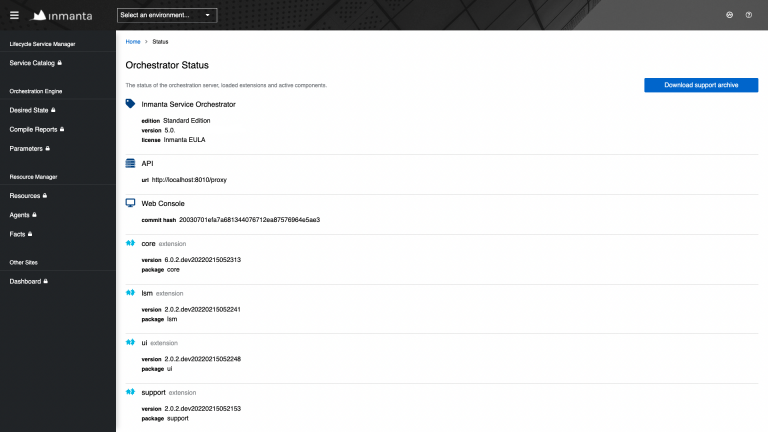
Summary of the changes
The Inmanta Service Orchestrator 5 release also introduces:
- VSCode extension interacts with the Python extension to allow venv selection.
- The supported PostgreSQL version is now 13.
- The supported Python version is now 3.9.
- This release requires RHEL 8.
- Jinja templates need to be compatible with Jinja 3.
- Introduced raw strings (r-strings) to the Inmanta language
You can find a detailed list of all the new features and changes in the changelog. We are constantly adding new features and improving our products, stay tuned for our future releases and blog posts!
